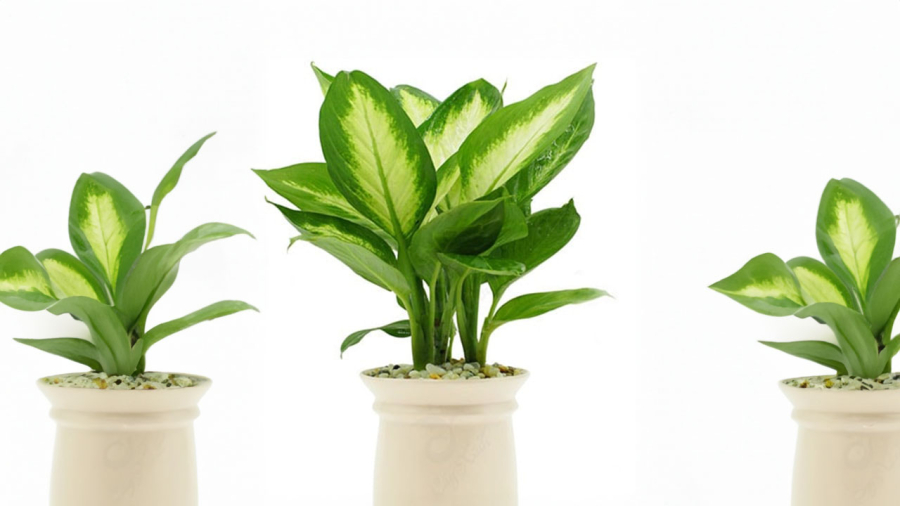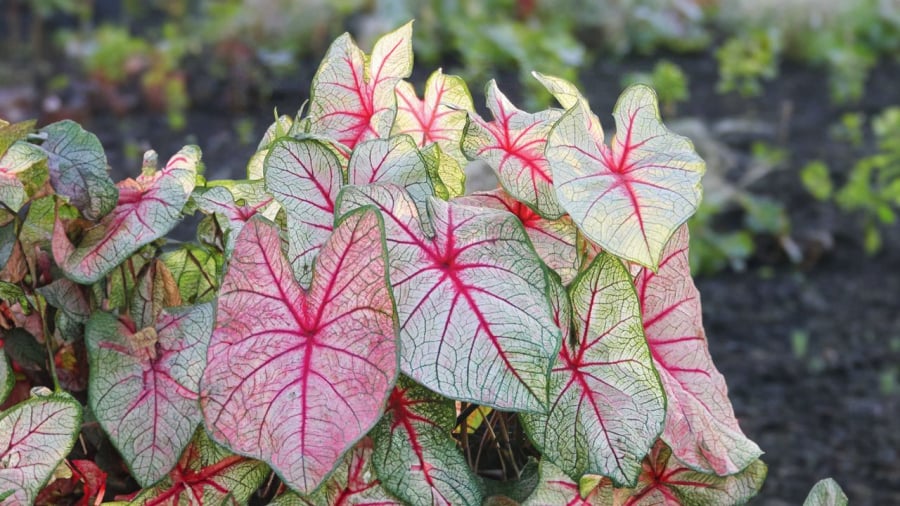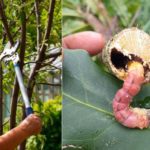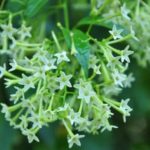Children sometimes engage in unknowing actions that adults can’t control in time. Some ornamental plants are beautiful but toxic, and children might pluck and put the flowers or leaves in their mouths, leading to poisoning. Therefore, you should carefully consider planting the following plants:
Pothos – ingestion may lead to speech loss
Pothos is easy to grow and requires little care, making it suitable for low-light indoor environments. Did you know that its common name, “dumb cane,” originates from the toxic properties of the plant? Ingesting its leaves can cause a burning sensation and speech loss due to the presence of oxalic acid, which can be dangerous if children chew and swallow the leaves, potentially causing mouth blisters.

Pothos is easy to grow but toxic
If a child consumes a significant amount of pothos leaves, they may experience dangerous symptoms such as a burning sensation in the mouth and throat, diarrhea, hoarseness, drooling, nausea, vomiting, swallowing pain, and swelling of the mouth and tongue. According to experts, other possible side effects include skin and eye irritation and corneal damage.
If a child accidentally ingests pothos, wipe their mouth with a cold cloth and have them rinse their mouth and spit. Seek immediate medical attention if they exhibit severe symptoms.
Caladium
Caladium, also known as “angel wings,” features heart-shaped leaves with a beautiful pink hue. However, like pothos, caladium contains high levels of oxalates, which can irritate the eyes and skin.

Caladium leaves are beautiful but may cause nausea if ingested
Consuming any part of the caladium plant can lead to symptoms such as a burning sensation in the mouth or throat, swelling and blistering of the mouth and tongue, hoarseness, difficulty speaking, nausea, vomiting, and diarrhea. If the leaves come into contact with the eyes, it can cause eye pain and corneal damage.
Oleander
Oleander is a highly toxic plant, and its leaves and flowers are often used for suicide attempts. Its beautiful flowers bloom profusely, but you should refrain from planting it due to its potential to cause fatal poisoning. Even the leaves falling into water and consumed by cattle can lead to poisoning and death.
Therefore, despite its attractive flowers, exercise caution when considering planting oleander indoors.
Anthurium
Anthurium, also known as “flamingo flower,” features heart-shaped leaves and flowers, making it a popular choice. Its other name, “heart’s door,” suggests happiness and good fortune, making it a favored plant for feng shui. However, if children ingest the leaves, it can cause a burning sensation, pain, and swelling in the mouth, difficulty swallowing, and hoarseness.
Spathiphyllum
Spathiphyllum is a newly popular species of peace lily with beautiful green and white leaves. However, it also contains oxalate crystals, which can irritate the skin and eyes.
Orchid Cactus
The orchid cactus has numerous sharp spines, making it unsafe for homes with young children who may accidentally get pricked. Moreover, the milky-white sap of the plant can cause a burning sensation and irritation, especially if ingested, leading to a weakened immune system. If it comes into contact with the eyes, it can cause blindness or reduced vision.

Orchid cactus is beautiful but contains toxins
Peace Lily
The peace lily is easy to grow and produces stunning white flowers, earning names like “white flag” and “peace flower.” However, it can cause irritation in the mouth and throat, swollen lips, coughing, nausea, and vomiting.
Money Plant
The money plant is a common houseplant, but all its parts are toxic. Chewing or swallowing any part of the plant can immediately cause pain, a burning sensation, and swelling of the lips, mouth, tongue, and throat.
If you have any of these plants in your home, instruct children not to touch or ingest them, just as you would teach them to stay away from electrical outlets. Alternatively, keep these plants out of their reach.




































